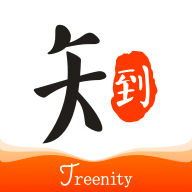抛砖引玉系列-smarty缓存控制(1)
smarty提供了强大的缓存功能。但有时我们并不希望整篇文档都被缓存,而是有选择的缓存某一部分内容或某一部分内容不被缓存。例如你在页面上端使用一个带有广告条位置的模板,广告条可以包含任何HTML、图象、FLASH等混合信息. 因此这里不能使用一个静态的链接,同时我们也不希望该广告条被缓存. 这就需要在 insert 函数指定,同时需要一个函数取广告条的内容信息。smarty也提供了这种缓存控制能力。
我们可以使用{insert}使模板的一部分不被缓存
可以使用$smarty->register_function($params,&$smarty)阻止插件从缓存中输出,
还可以使用$smarty->register_block($params,&$smarty)使整篇页面中的某一块不被缓存。
下面我们真对一个简单需求,分别说明这三种控制缓存输出的方法。
需求:被缓存的文档中当前时间不被缓存,随每次刷新而变化。
1、使用insert函数使模板的一部分不被缓存
index.tpl:
index.php
function insert_get_current_time(){
return date("Y-m-d H:m:s");
}
$smarty=new smarty();
$smarty->caching = true;
if(!$smarty->is_cached()){
.......
}
$smarty->display('index.tpl');
注解:
定义一个函数,函数名格式为:inser_name(array $params, object &$smarty),
函数参数可选的,如果在模板的insert方法中需要加入其他属性,就会作为数组传递给用户定义的函数。
如:{insert name='get_current_time' local='zh'}
在get_current_time函数中我们就可以通过$params['local']来获得属性值。
如果在get_current_time函数中需要用到当前smarty对象的方法或属性,就可以通过第二个参数获得。
这时你会发现index.tpl已被缓存,但当前时间却随每次刷新在不断变化。
2、使用register_function阻止插件从缓存中输出
index.tpl:
index.php:
function smarty_function_current_time($params, &$smarty){
return date("Y-m-d H:m:s");
}
$smarty=new smarty();
$smarty->caching = true;
$smarty->register_function('current_time','smarty_function_current_time',false);
if(!$smarty->is_cached()){
.......
}
$smarty->display('index.tpl');
注解:
定义一个函数,函数名格式为:smarty_type_name($params, &$smarty)
type为function
name为用户自定义标签名称,在这里是{current_time}
两个参数是必须的,即使在函数中没有使用也要写上。两个参数的功能同上。
提示:试试键盘 “← →” 可以实现快速翻页
每日精选
-

PC鲜辣报:英伟达Rubin架构正式投产,硬件市场迎来倒退
一年一度的CES大会在上周正式到来,英伟达正式开启Rubin架构时代,RTX 50 Super搁置并计划复产RTX 3060。并且AMD采取重启AM4平台及Ryzen 5000系列策略,整体呈现了AI大幅度升级、消费级硬件则倒退的格局。
-

内存涨价冲击太大 魅族22 Air已取消上市计划
魅族科技在成都举办的一场魅友活动中表示,由于内存的大幅上涨,已经对手机商业计划造成了巨大的冲击,导致魅族22 Air取消上市计划。
-

春节前推出 荣耀Magic8 RSR保时捷设计爆料
荣耀Magic8 RSR保时捷设计的核心配置遭到曝光,从规格信息来看,这款荣耀影像旗舰在影像、性能、续航等方面均十分出色。预计该机将在春节前推出。
-

-

因国补额度短缺 2025中国电视整机出货量创下16年新低
洛图科技表示,2025年,中国电视市场最大的影响因素是“国补”政策。国补政策至2025年第三季度,因额度短缺,刺激效果退坡。
-

iPhone 4翻红需求暴增1000% 只为拍照氛围感
据外媒报道称,苹果在十几年前推出的iPhone 4手机突然翻红,该机需求量暴增1000%,已经成为很多年轻人的时髦产品。
-

2月25日推出 三星Galaxy S26系列发布时间确认
爆料者Evan Blass曾透露,三星Galaxy S26系列新品Unpacked活动,将会在2026年2月25日举行。
-

苹果iPhone Fold爆料汇总 主打无折痕视觉体验
苹果首款折叠屏手机iPhone Fold,近期再添新爆料。多方信息显示,该机有望于2026年秋季亮相,搭载7.76英寸内屏,并使用液态金属铰链,起售价预计不低于2000美元。
-

CES 2026:九号全新E-Bike电助力自行车新品亮相
九号公司作为全球创新个人交通和服务机器人行业的创新主力军,再次参展CES,仍聚焦“创新个人交通”和“服务机器人”两大核心业务。
-

微星 RTX 5090 LIGHTNING系列显卡预计包含多个版本
根据前几日的的报道,微星RTX 5090 LIGHTNING系列超旗舰显卡产品线时隔七年回归,同时这款显卡于2026年1月6日在CES 2026正式发布,搭载NVIDIA最新Blackwell架构,主打极限超频性能与豪华堆料。










































网友评论